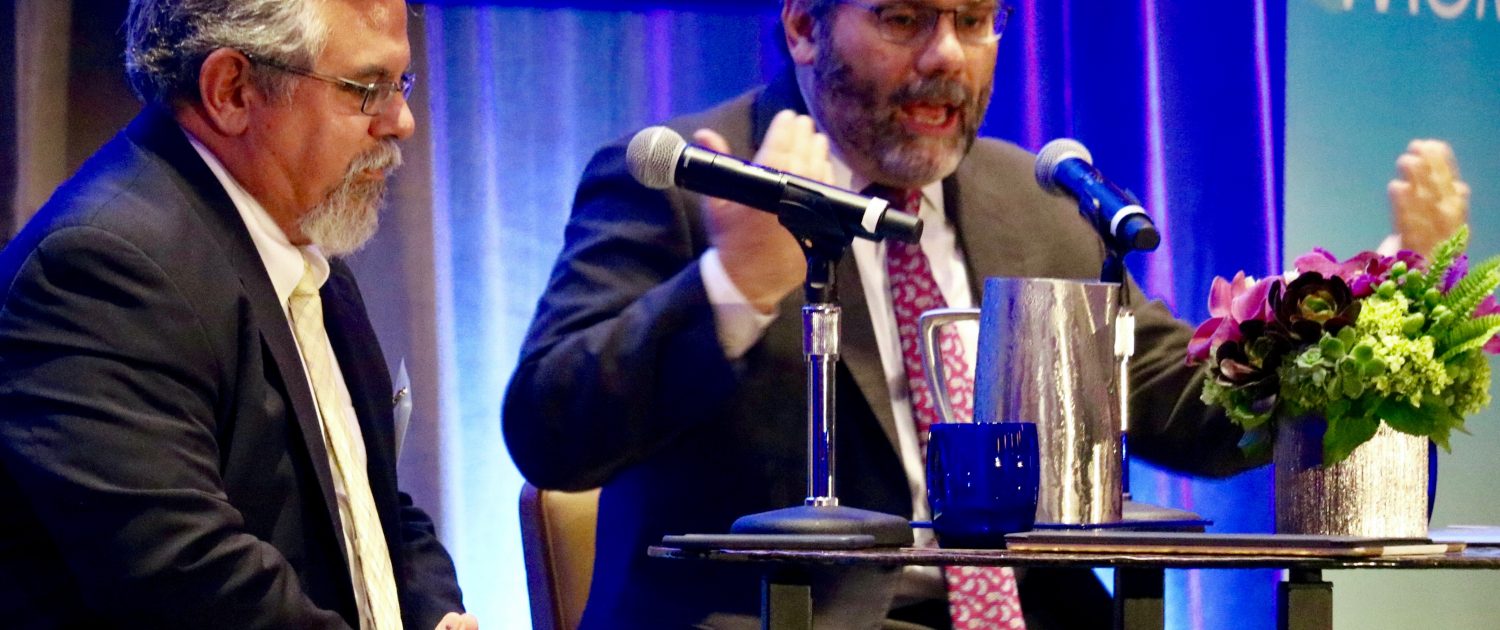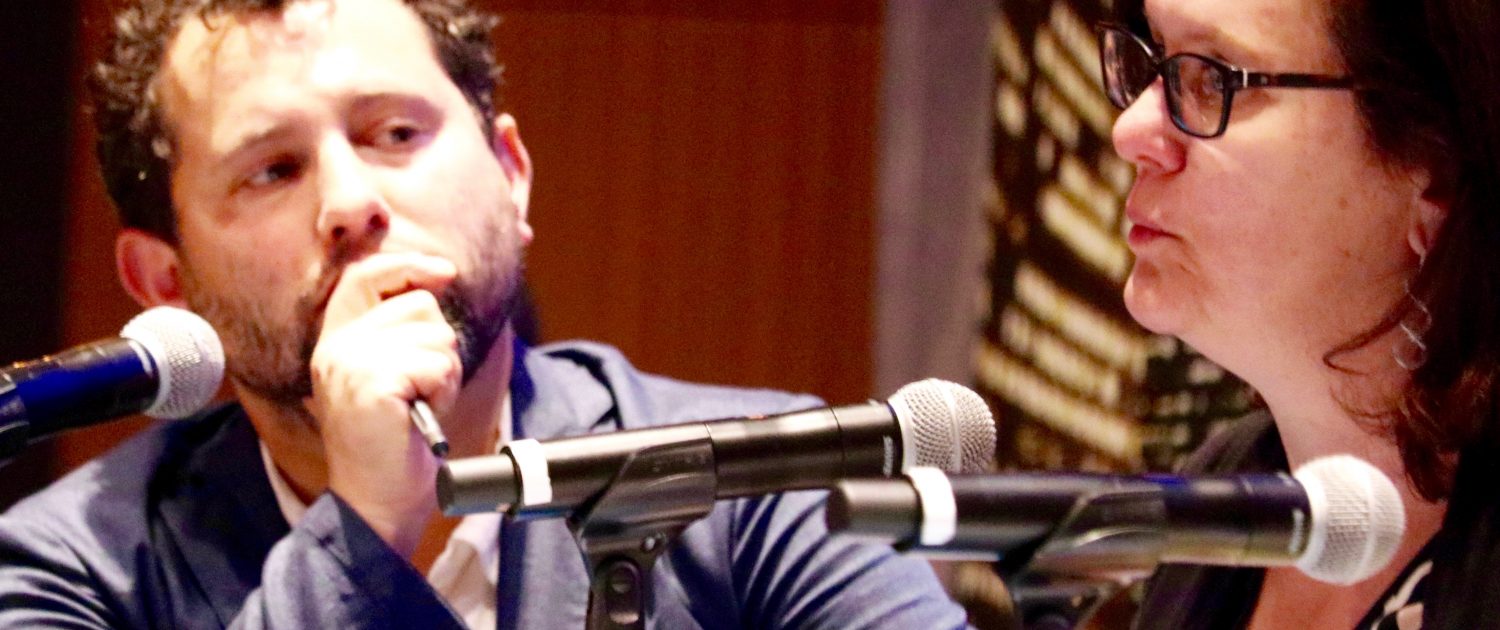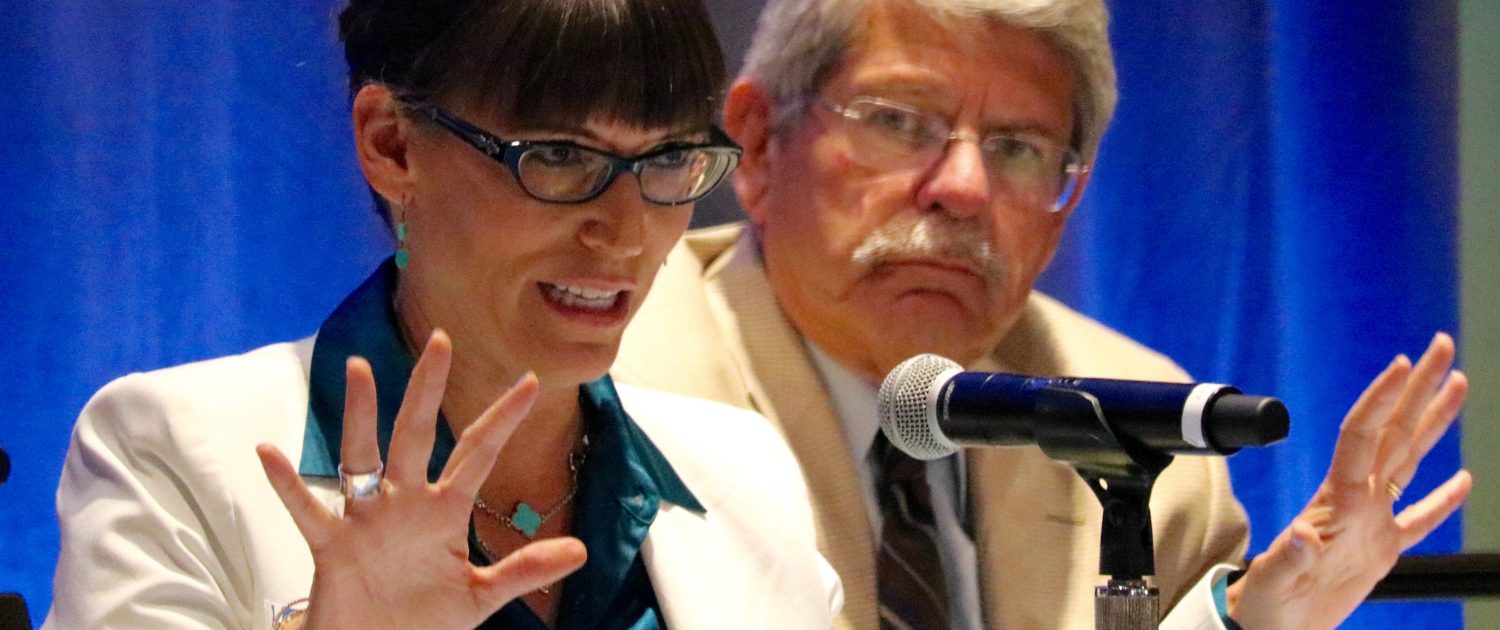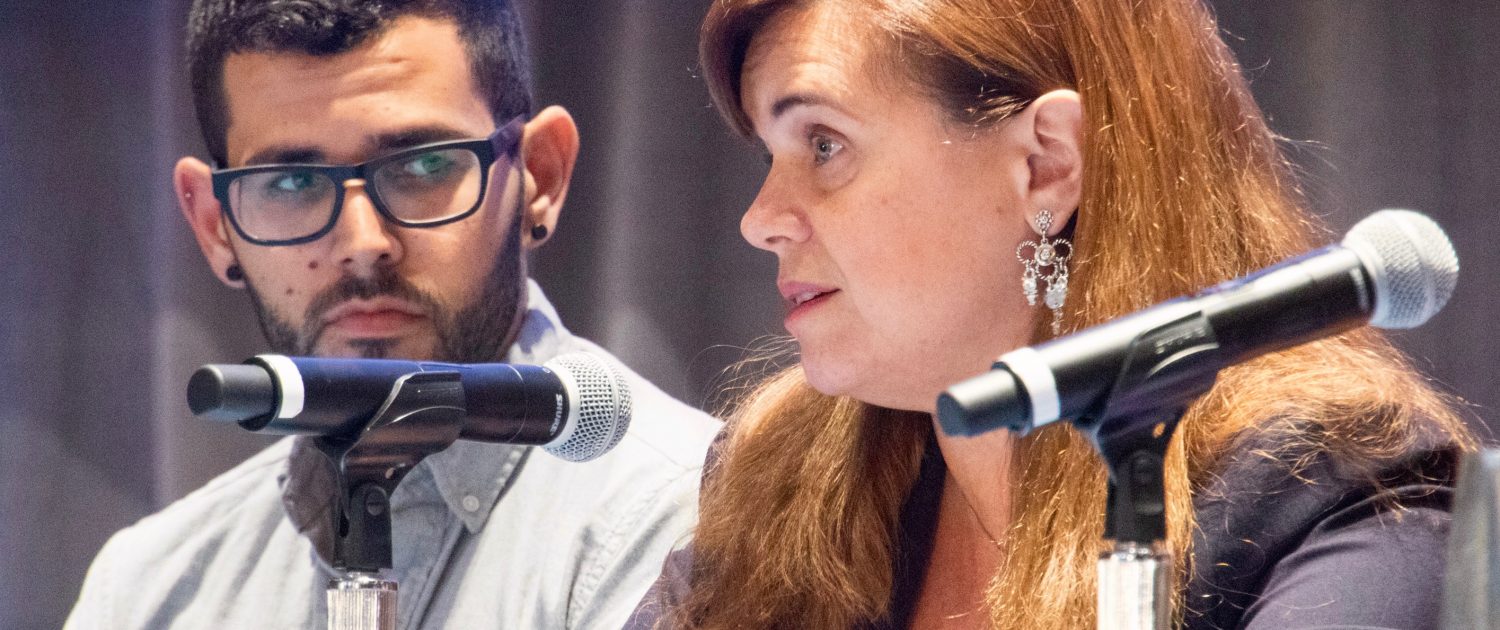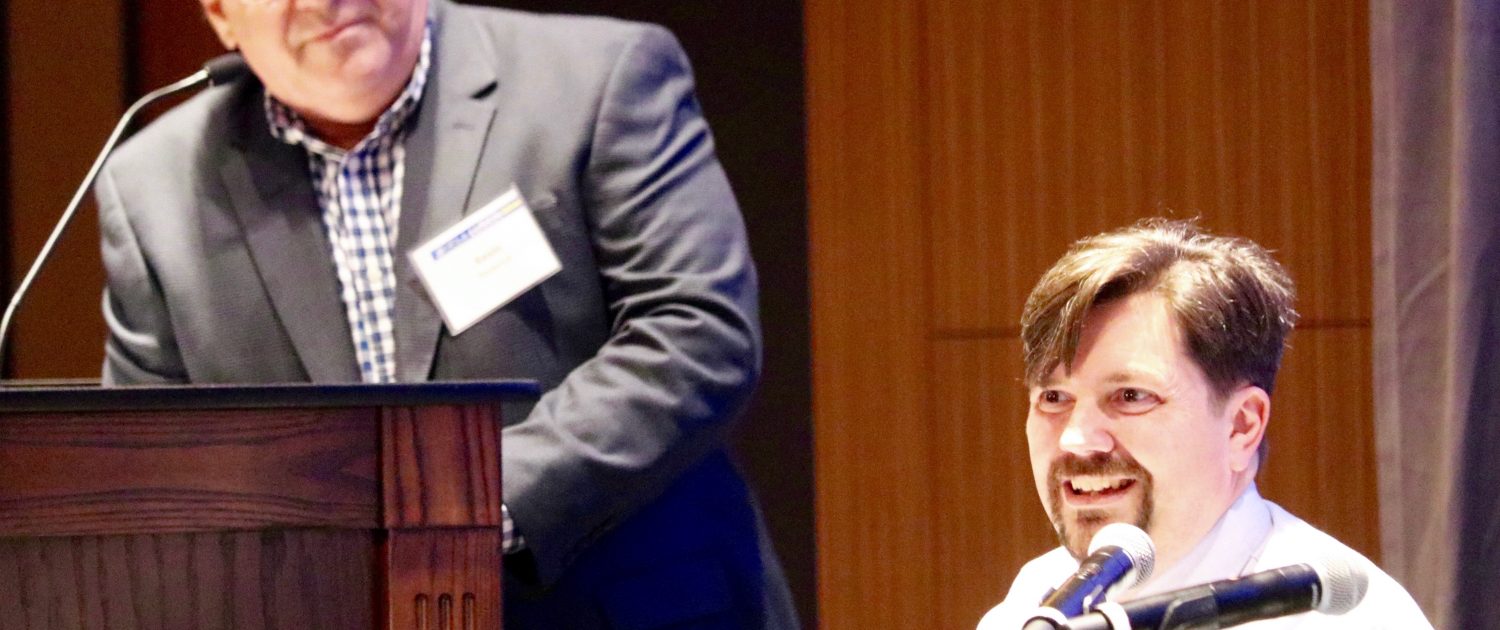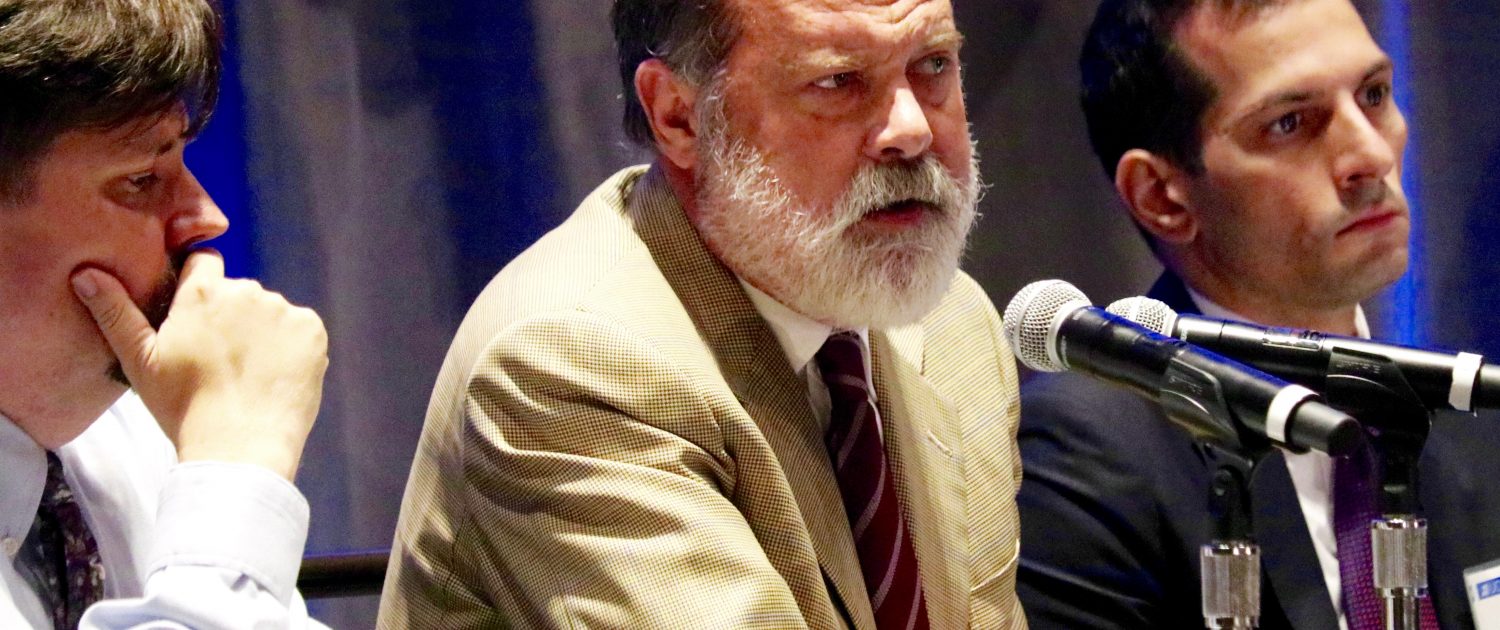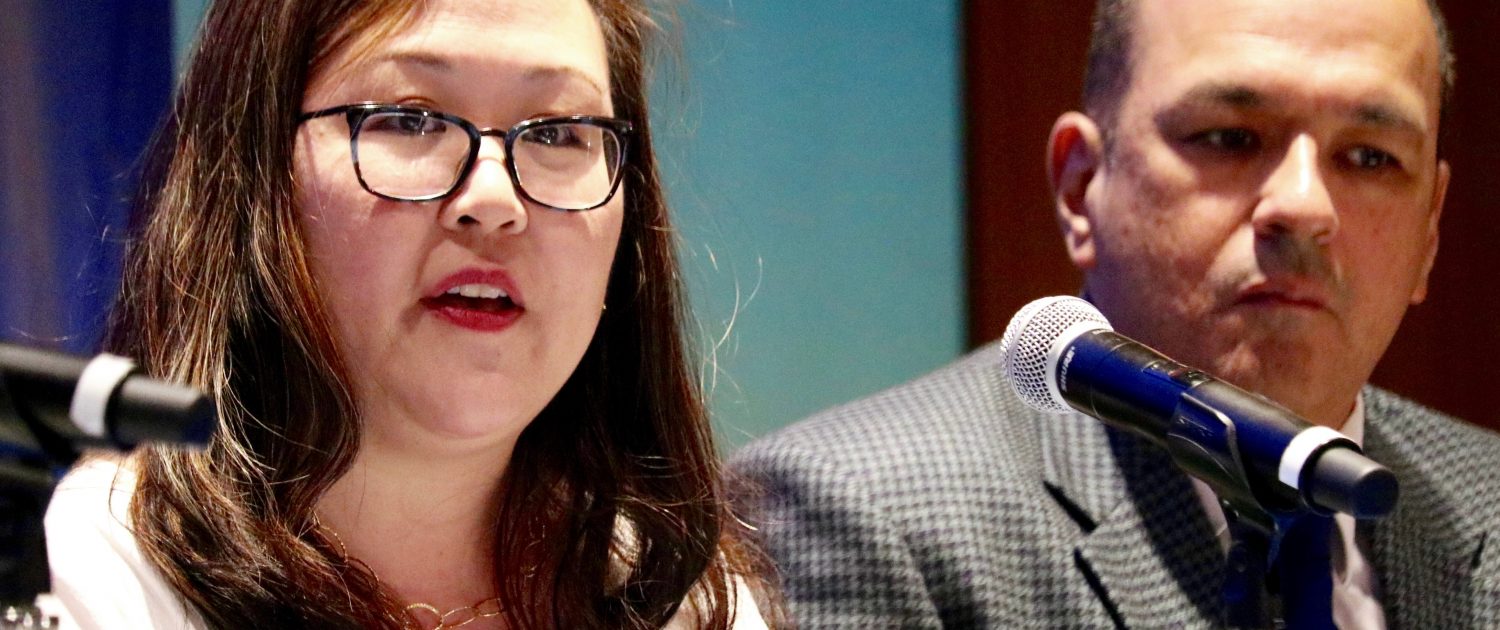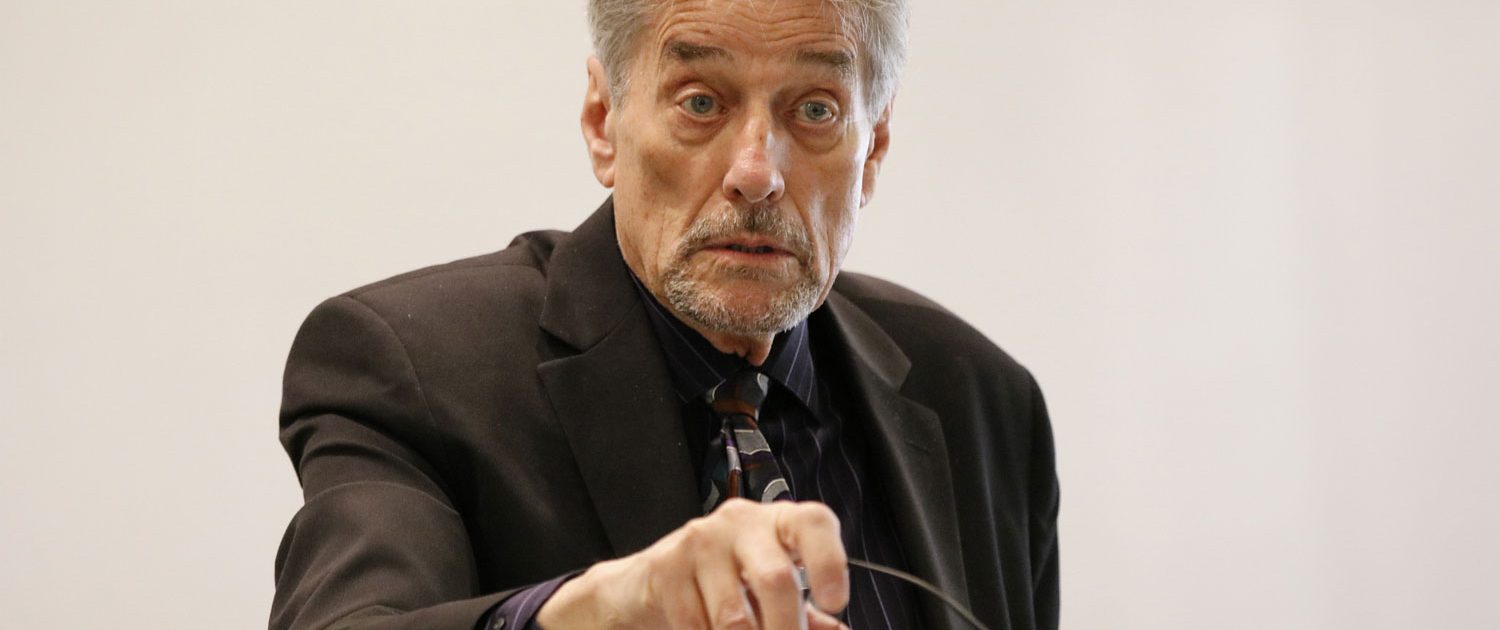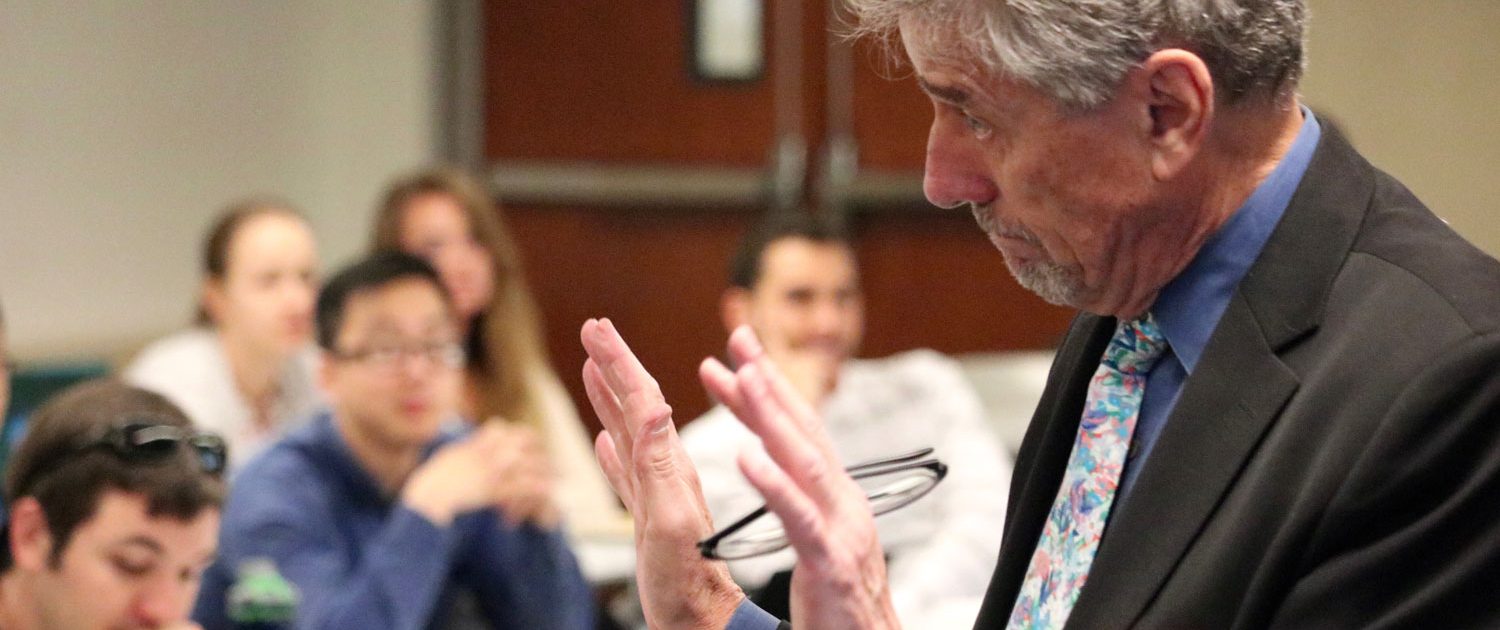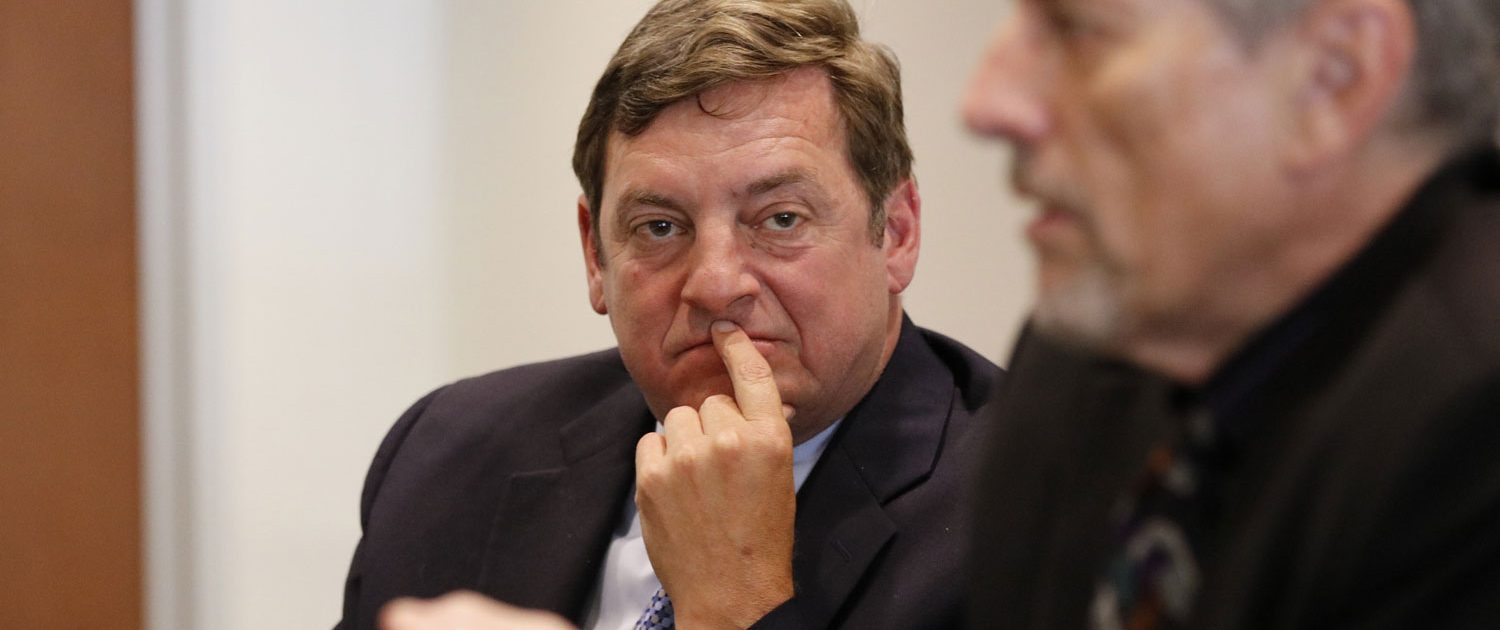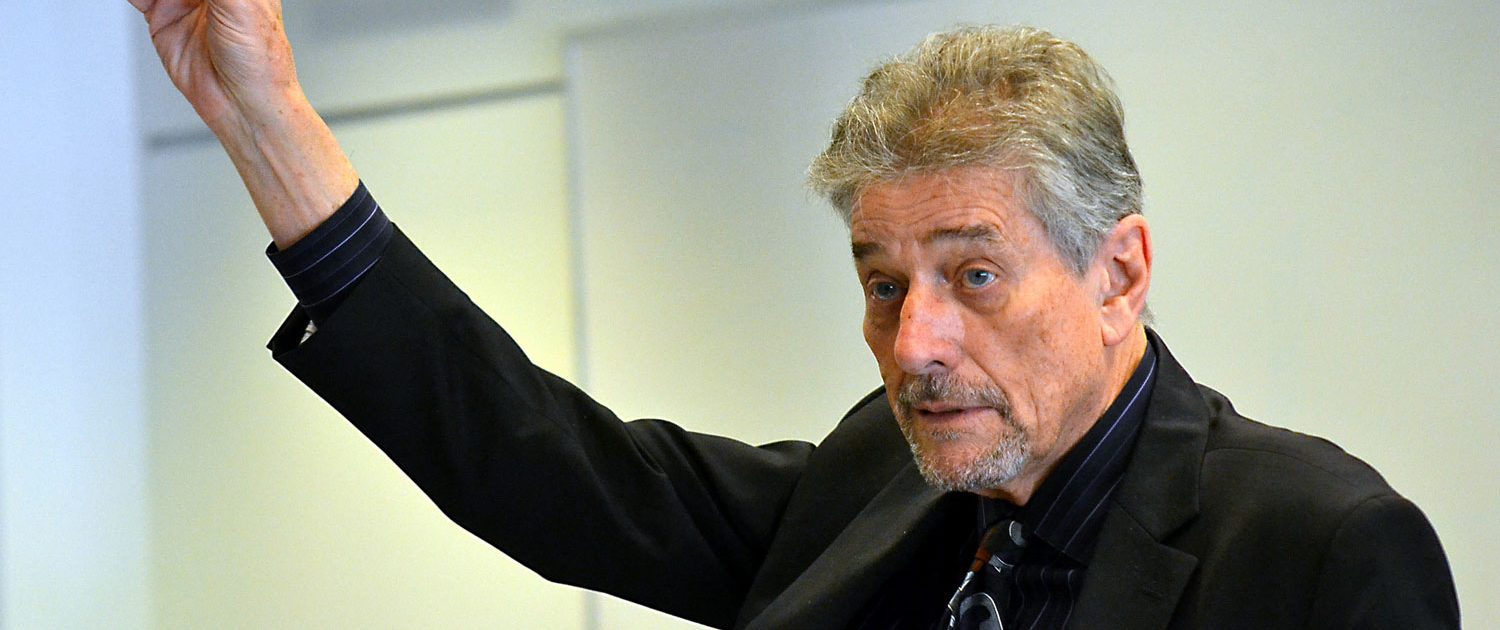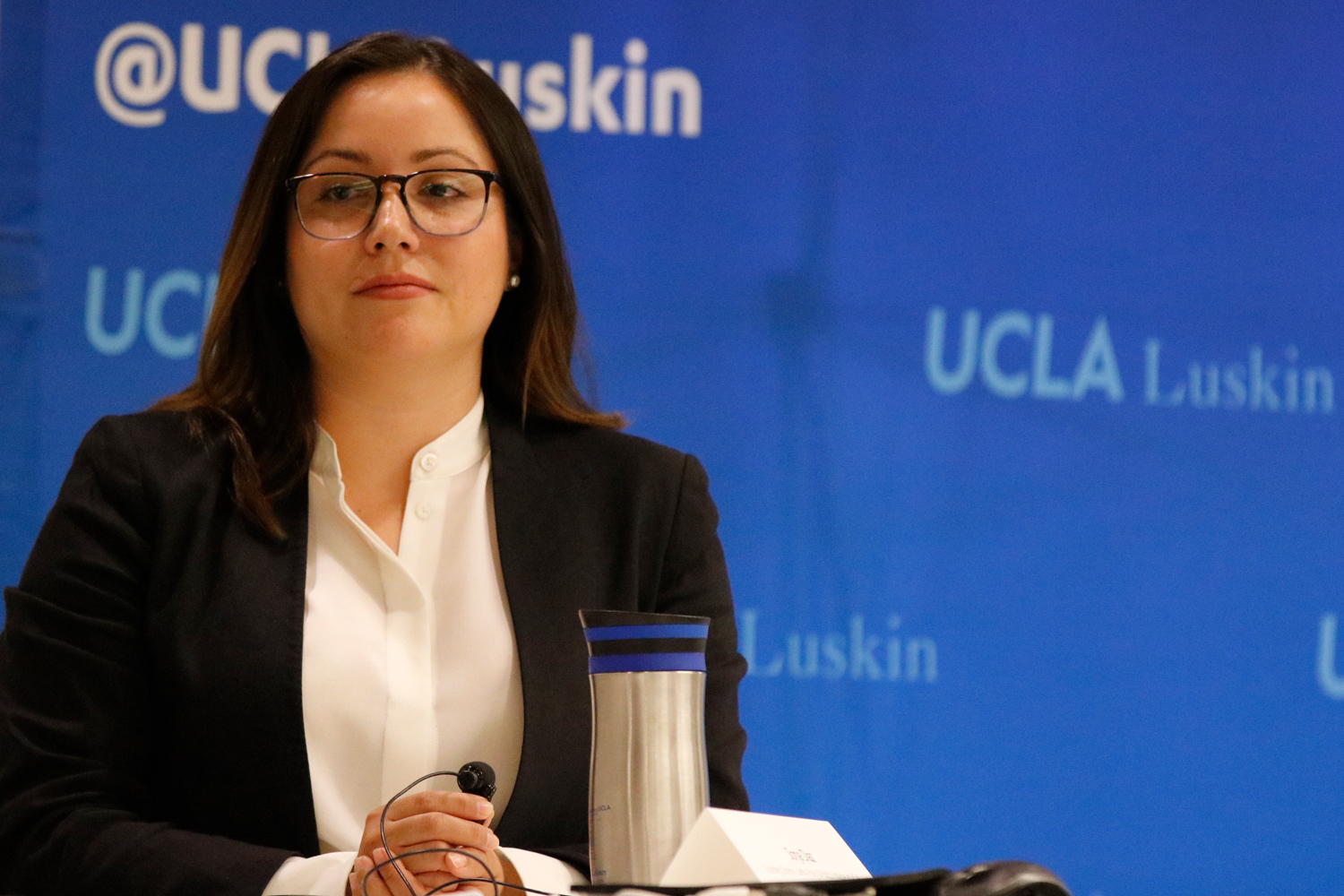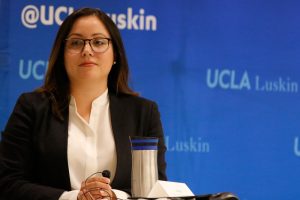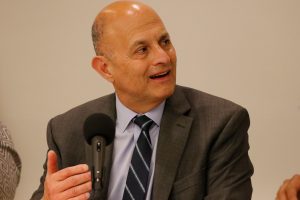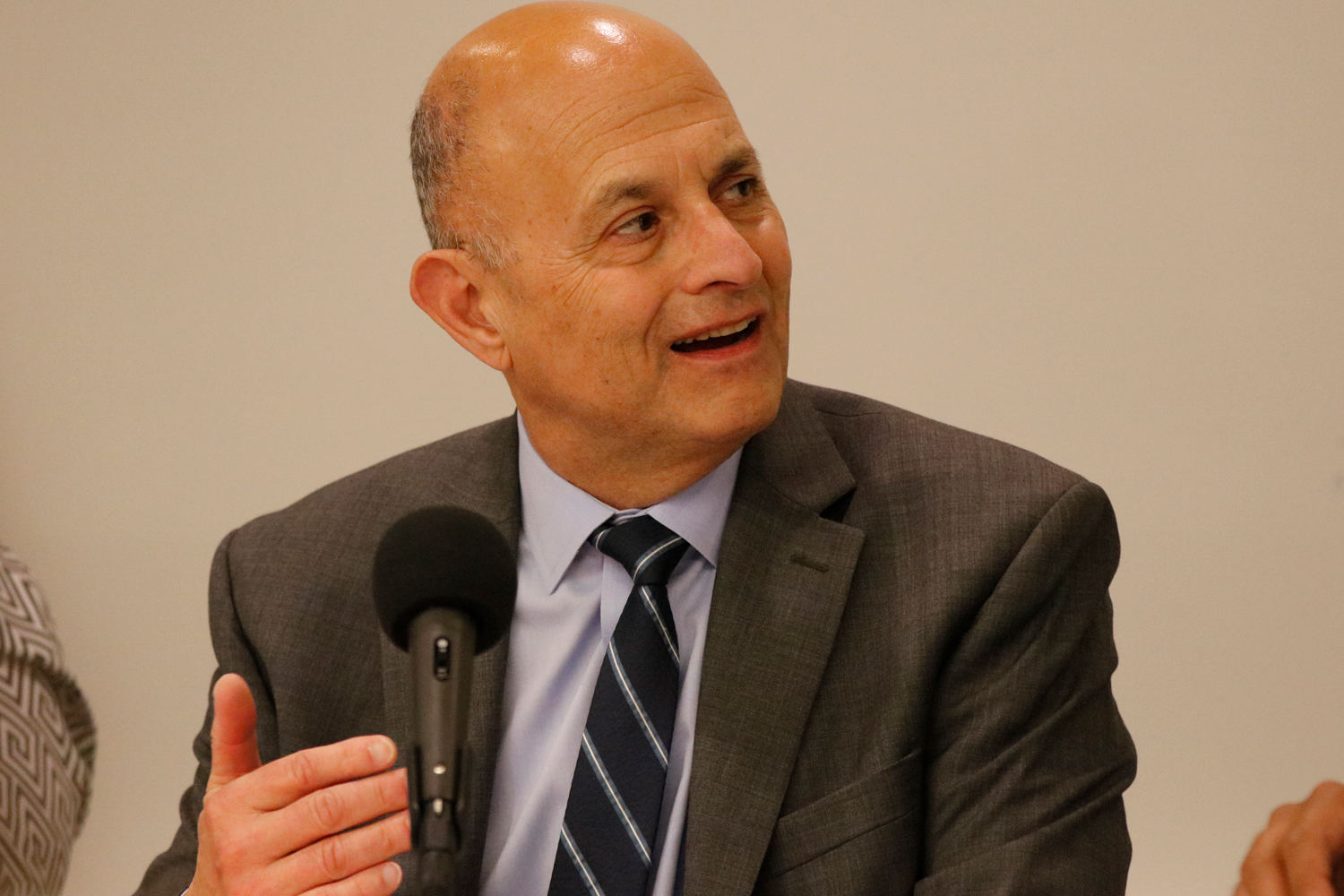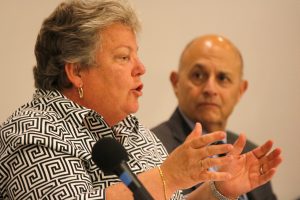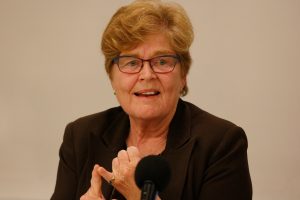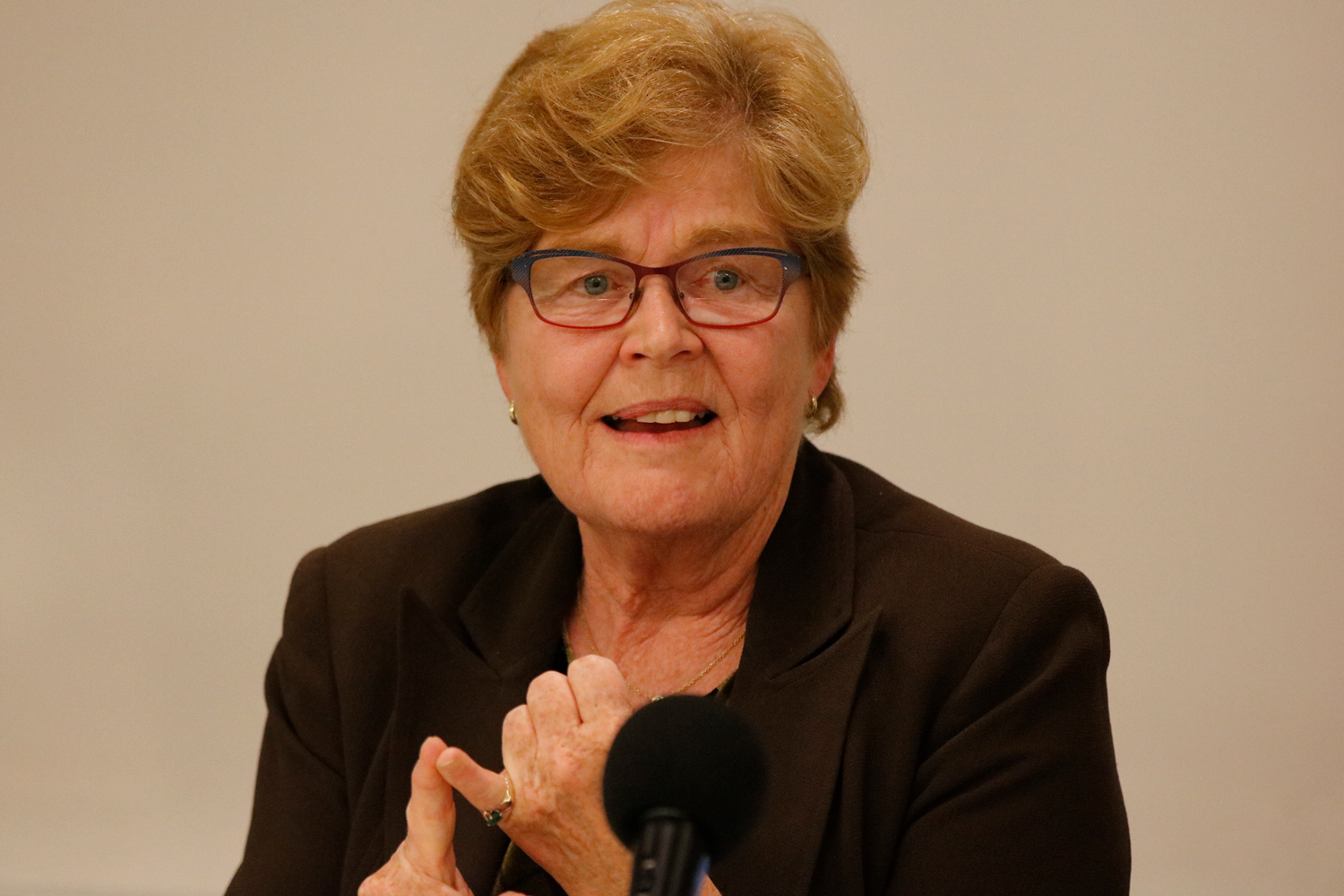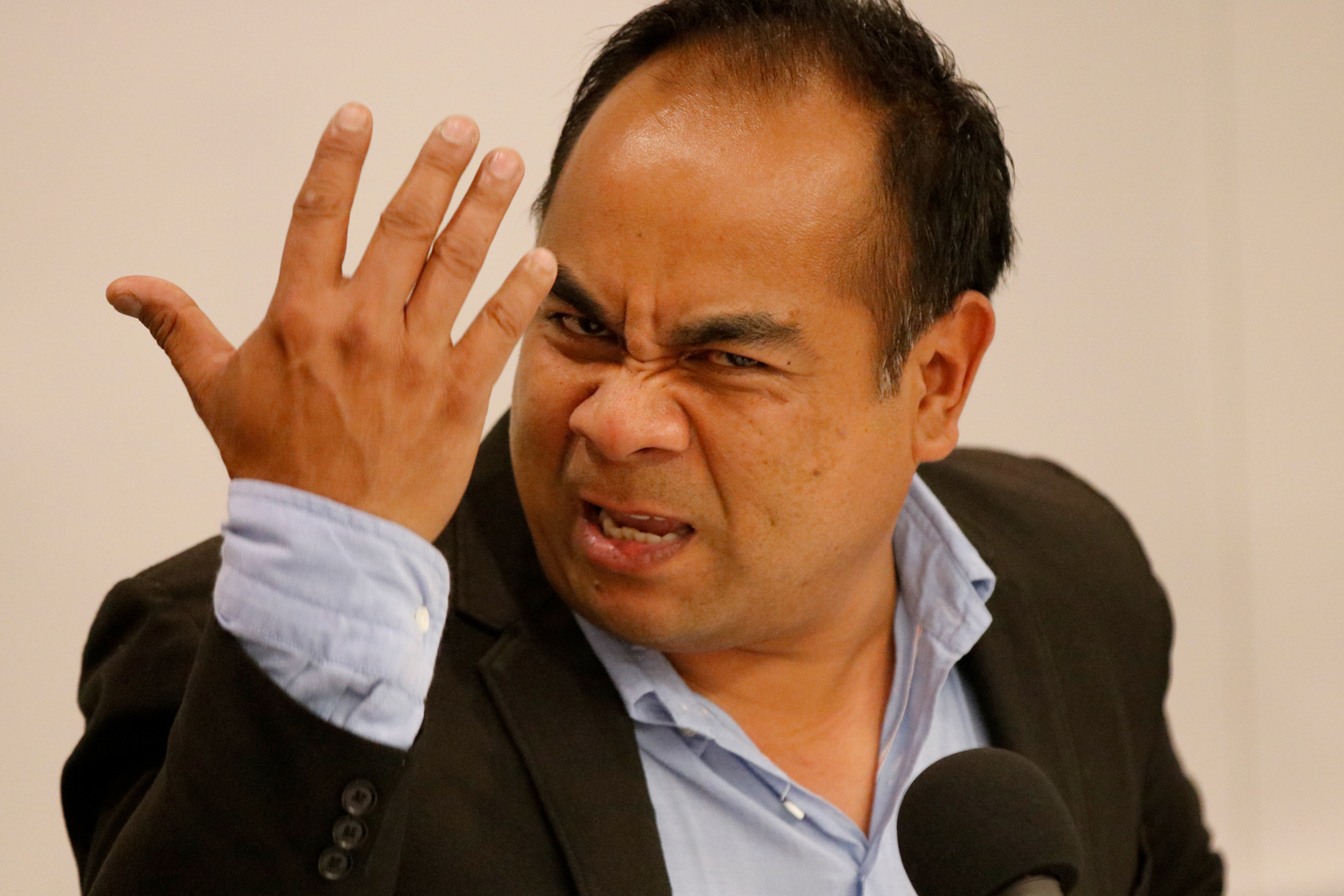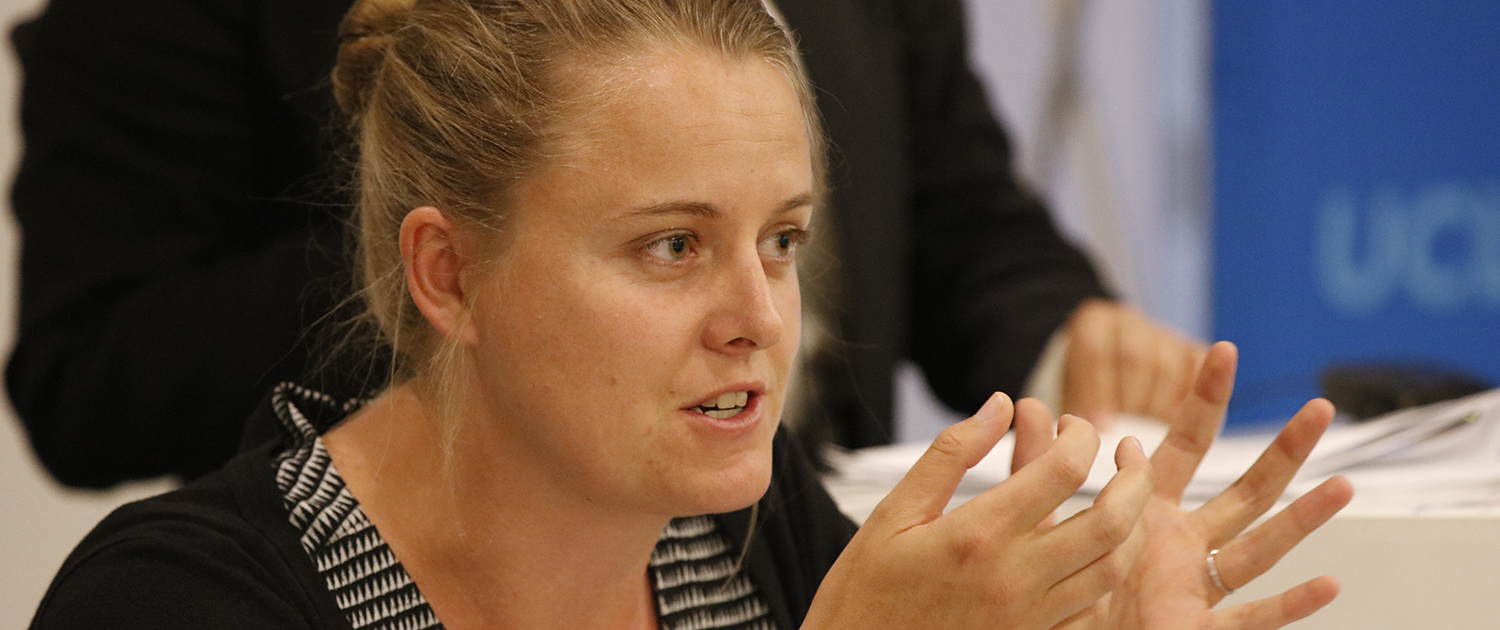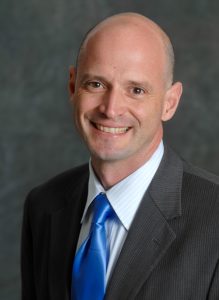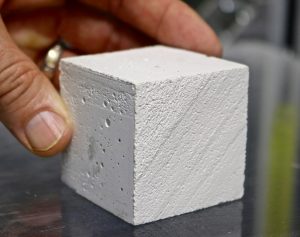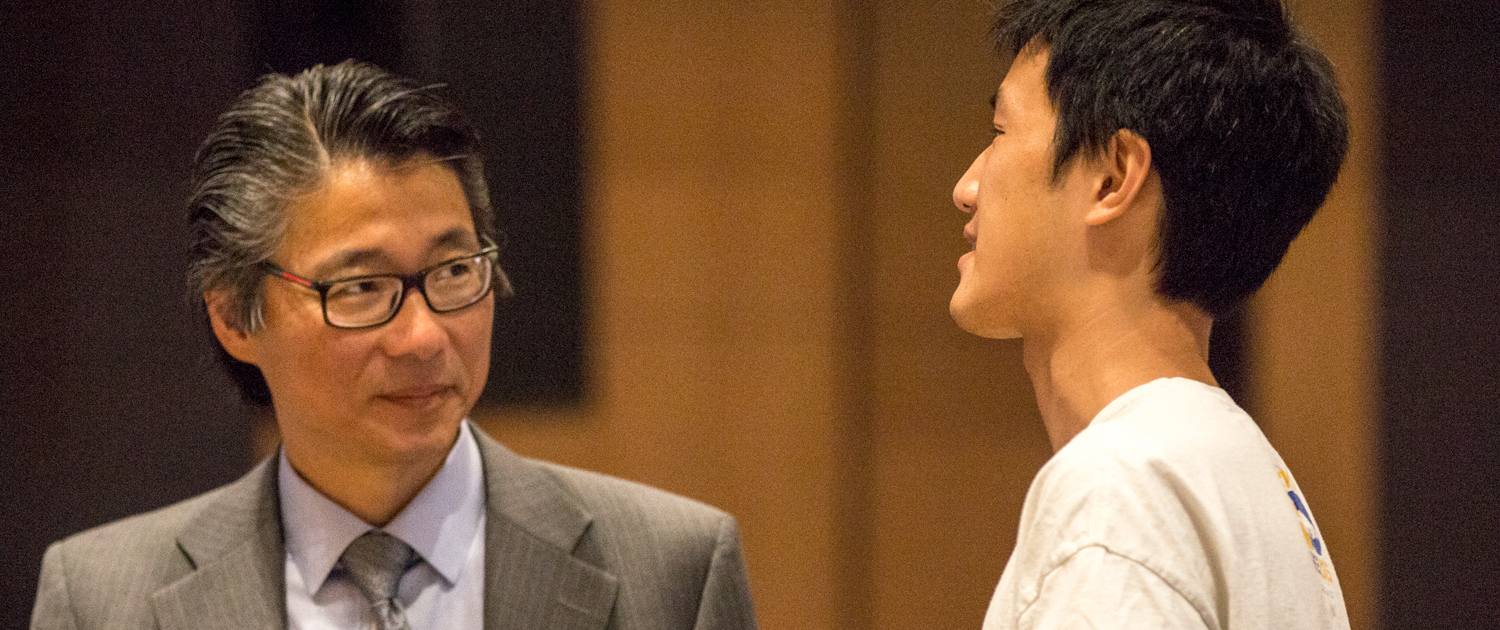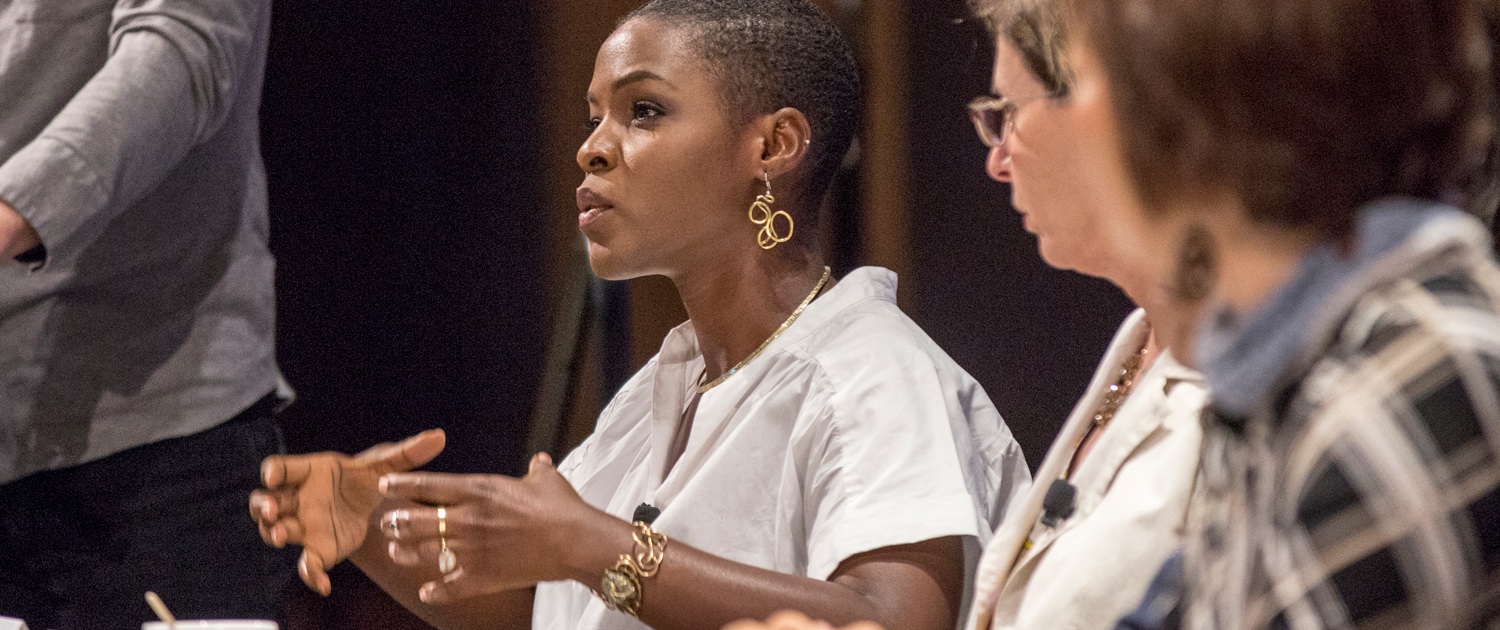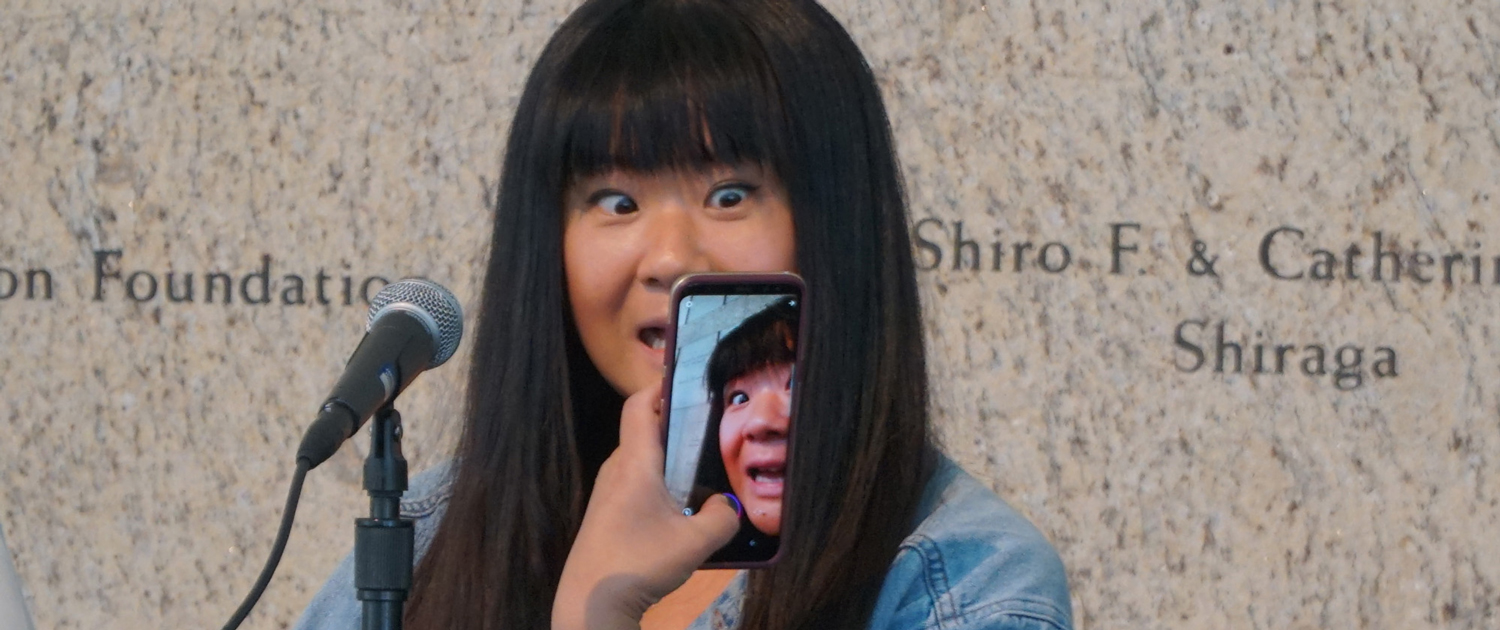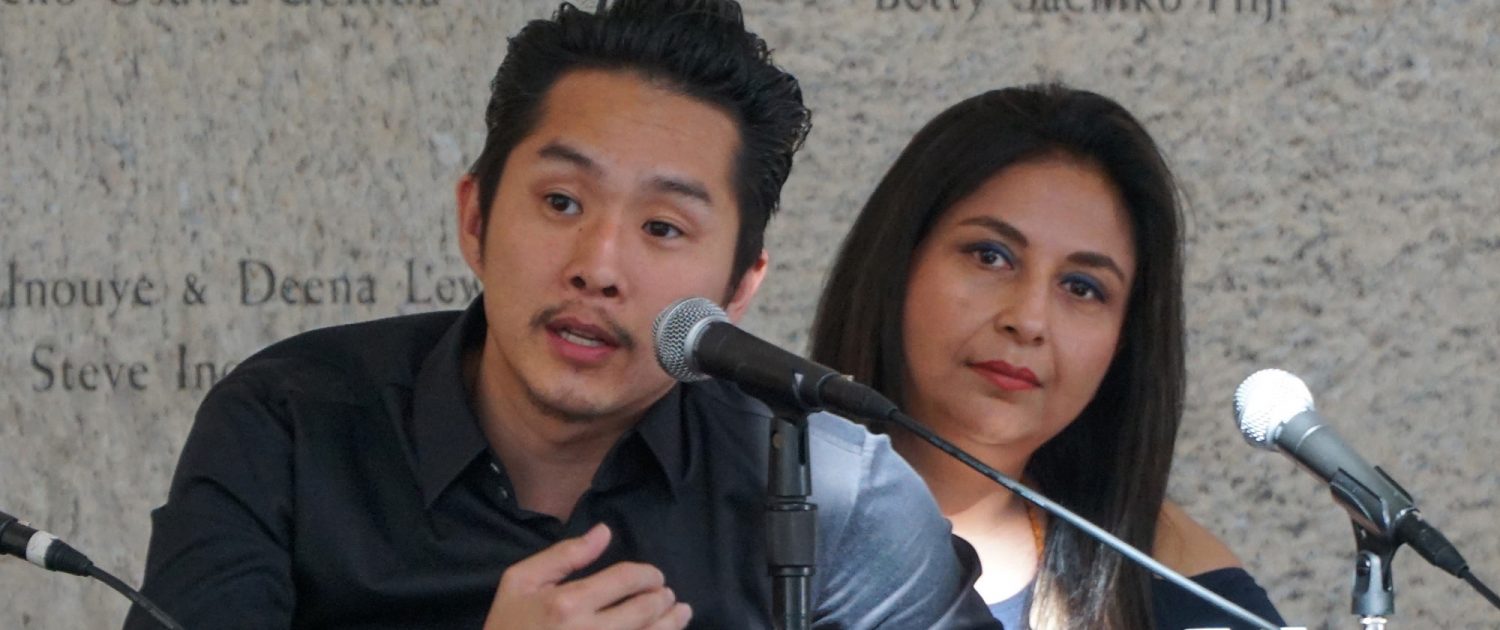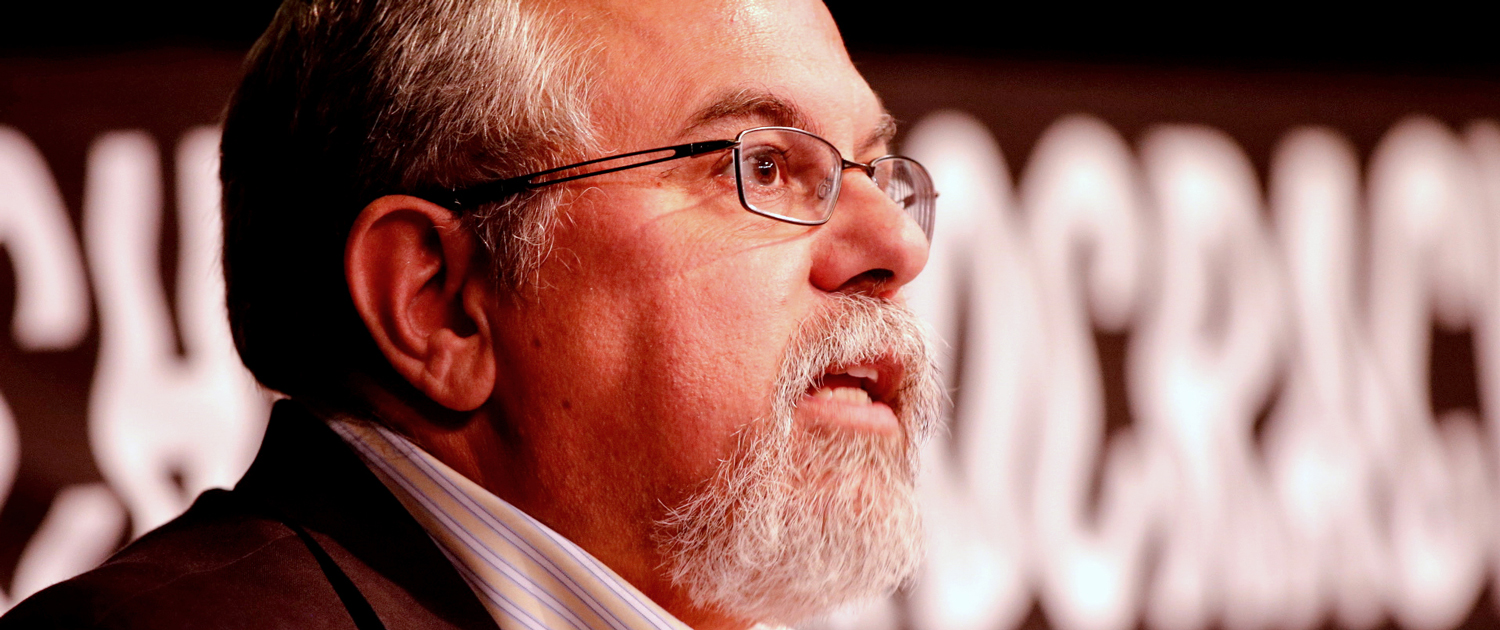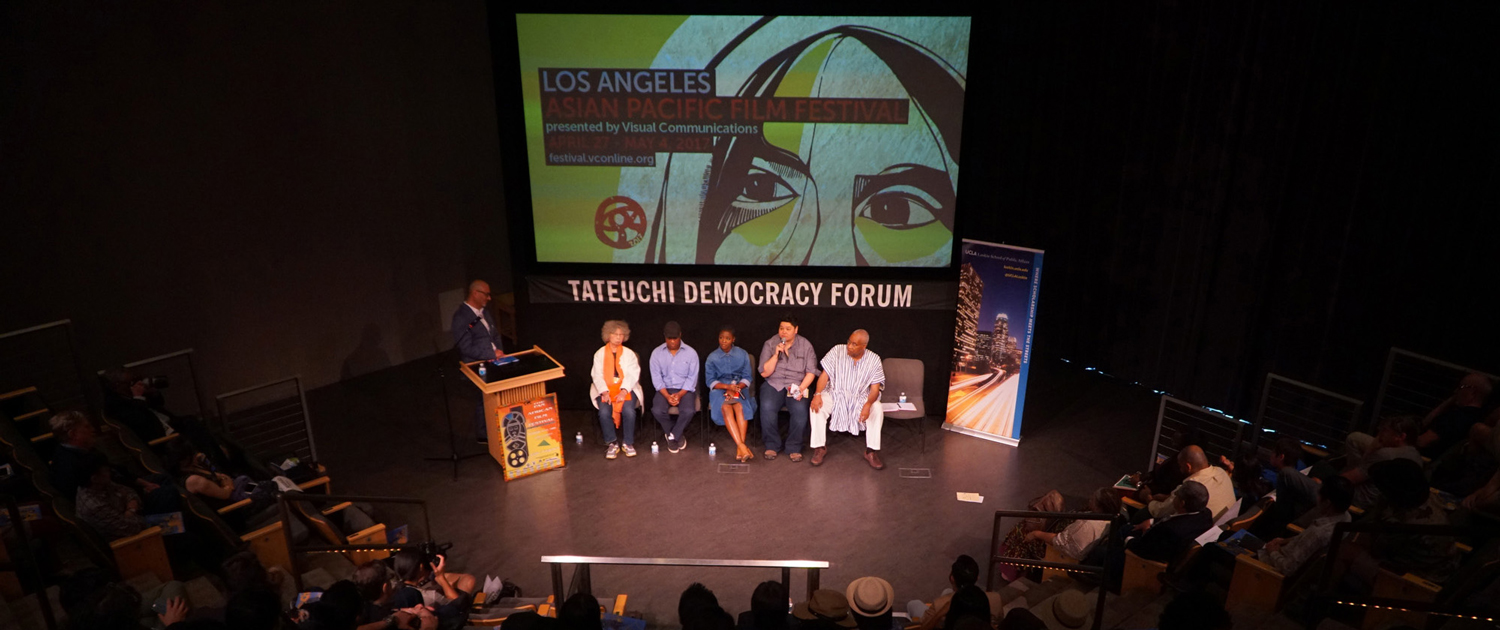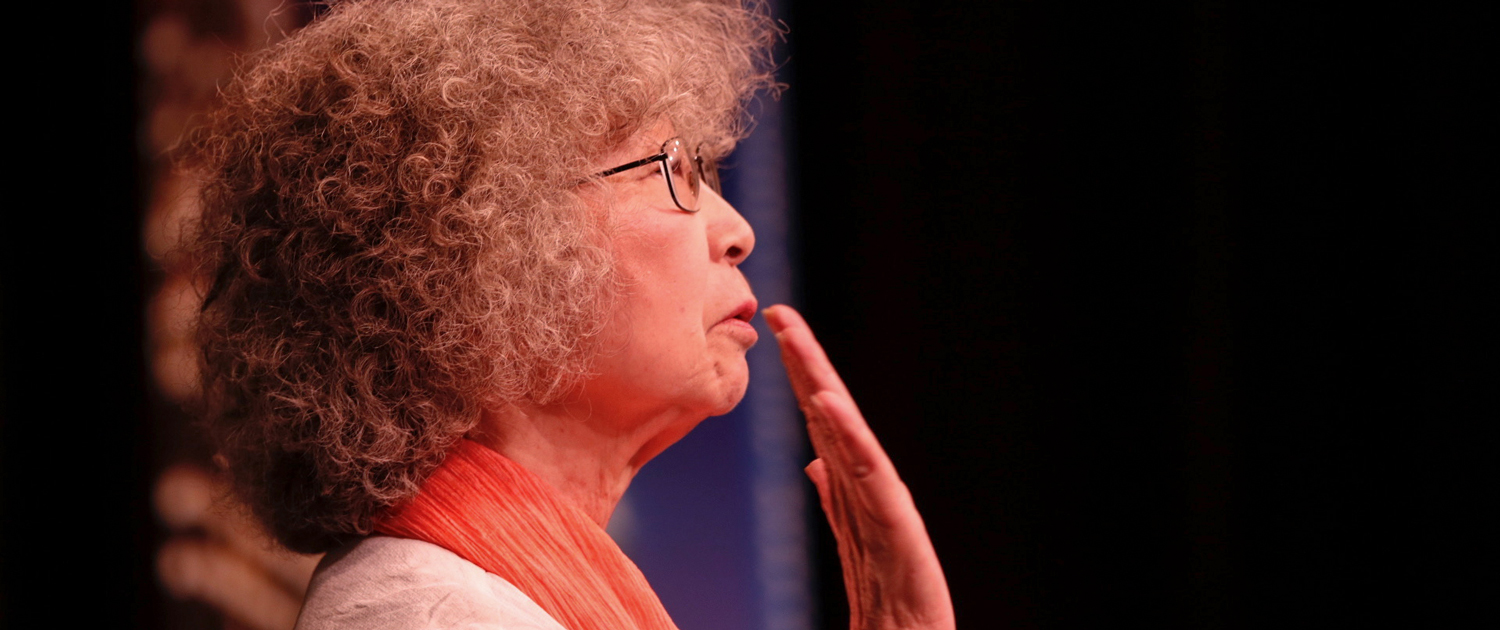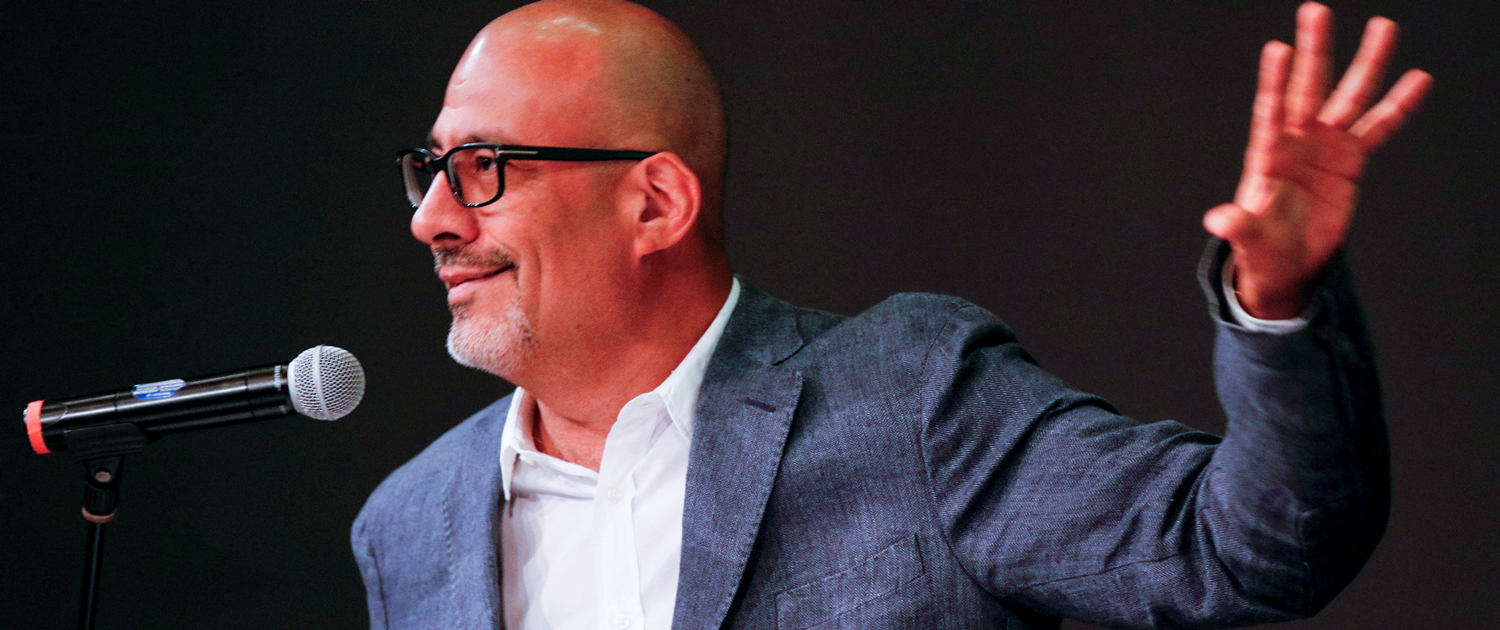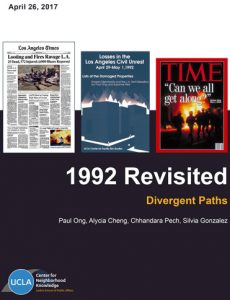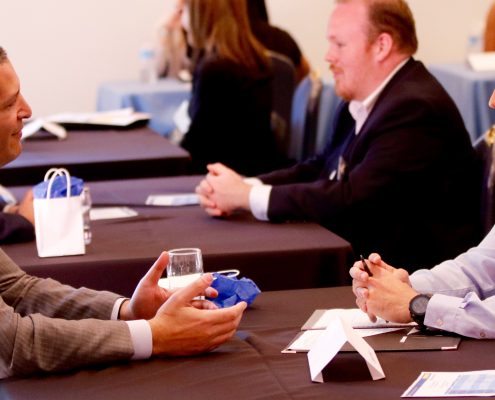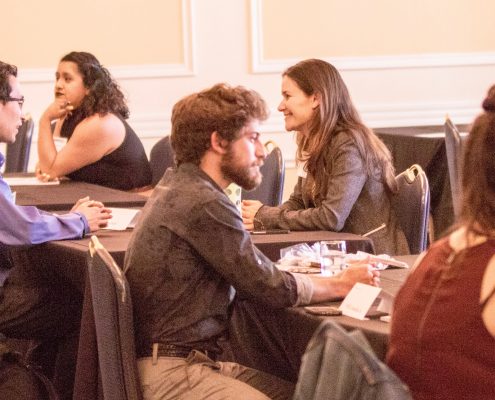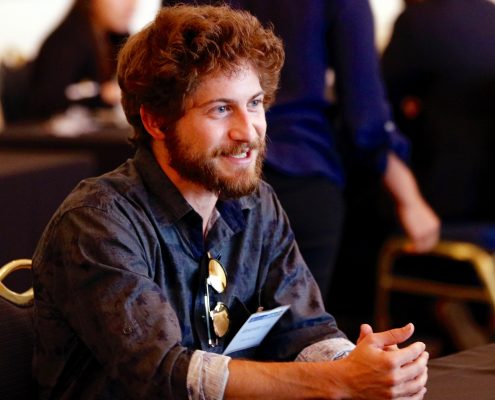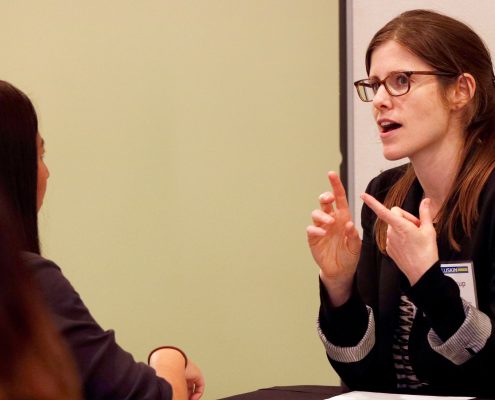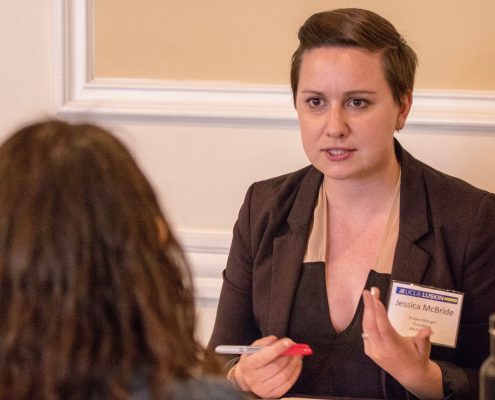Truth and Media in ‘a Perilous Time’ In a Luskin Lecture, Ray Suarez and 19 other journalists and scholars discuss the role of news reporting in a divided America
By Zev Hurwitz and Stan Paul
At the end of a daylong symposium during which journalists, scholars and media pundits debated whether truth matters in a polarized United States, reporter and news anchor Ray Suarez summarized the condition of American politics vs. American journalism.
“The job of telling the truth is different than the job of getting elected,” Suarez said.
The former host of Al Jazeera America’s “Inside Story” and contributor to PBS “NewsHour” delivered the final Luskin Lecture of the academic year on May 25, 2017, capping a full day of programming that addressed a pertinent question: “Do Words Matter? Journalism, Communication and Alternative Truth.” The lecture and preceding panel discussions were sponsored by the UCLA Luskin School of Public Affairs and held at the new Meyer & Renee Luskin Conference Center on the UCLA campus.
Suarez spoke about the role of the media in a world in which traditional journalism is trusted only marginally and the truth seems to matter less and less.
Referring to the recent contest for Montana’s only congressional seat in a special election, Suarez discussed newly elected Greg Gianforte’s body slam of a reporter from the Guardian on the eve of the election.
“Think about where we are — physical attacks on reporters asking questions. That’s the kind of thing that happens in Moscow, not in Montana,” Suarez said. “While we’re at a perilous time for the country and the world, respect for the news business keeps finding new lows.”
‘Truth Is Under Tremendous Stress’
Suarez told the audience of students, faculty and community members about a recent exchange he had on Twitter with a critic who was unhappy after Suarez appeared on Fox News. Suarez had argued for the use of unnamed sources in certain instances, and afterward he became engaged in a social media argument with the Twitter user, who was convinced that President Trump won the 2016 election’s popular vote. In fact, Trump lost the popular vote by almost 3 million ballots.
“Truth is under tremendous stress in the United States,” Suarez said. “Observable, countable, measurable, testable truth now has to fight on an even playing field with your feelings. At the risk of pointing out the obvious, your feelings don’t carry the burden of evidence that truth does.”
Most fake news has an obvious slant, but biased reporting leads to public distrust of reporting, Suarez said. This mistrust of media threatens the ability of journalists to cover stories.
Suarez’s lecture was followed by a conversation with Gary Segura, dean of the UCLA Luskin School of Public Affairs. Segura, who had been interviewed by Suarez for stories in the past, talked about how much he admires the integrity of impartial journalists.
“I have great respect for journalists and especially those who persevere in pursuing objectivity — especially in the face of those who hold power in Washington,” Segura said during introductory remarks. “Ray Suarez is one of those journalists.”
Focusing on the state of media during the Trump presidency, the lecture followed these three panels: “The 2016 Campaign and Media Impact,” “The Face/Place of Media During the Trump Administration” and “Truth or Trolls.”
‘Truth is a Really, Really Big Deal’
Segura opened the day, talking about the importance of the UCLA Luskin commitment to “the value of information.”
“If we did not take Mr. Trump seriously before, we sure do now,” Segura said. “We have to understand the demonization of the press. … We find ourselves in a moment where reporting the truth is a really, really big deal.”
Sasha Issenberg, journalist and author of “The Victory Lab, the Secret Science of Winning Campaigns,” served as moderator of the first panel, which addressed the question of whether the news media played a key role in President Trump’s upset victory on Nov. 8, 2016.
“Should we be thinking differently about that question as it pertains to 2016?” Issenberg asked Lynn Vavreck, professor of political science and communication studies at UCLA.
“I think the answer to that question is no,” Vavreck said. “The media doesn’t really tell voters what to think, what positions to hold on issues, for example, but it does do a great job of telling voters what to think about.”
With nearly four decades in public service, panelist Zev Yaroslavky, director of the Los Angeles Initiative at UCLA Luskin, said of the 2016 election, “Overall, what troubled me about that campaign was that it set a new low on what constitutes acceptable for discourse in the political realm in our country.”
Segura moderated the second panel discussion, asking how the press will be able to cover a new administration that is seemingly playing it by ear, intentionally excluding select larger mainstream media from some press briefings.
‘The Leaky White House’
Adam Nagourney, West Coast bureau chief of the New York Times, said that, as a former White House reporter during the Clinton administration, he found the day-to-day job could be boring: “You’re getting fed stuff” that may be inconsequential, he said. But, he added, “You want someone in the White House keeping track of what’s going on.”
Of Trump, Nagourney noted that this has been “the most leaky White House that has ever existed.”
Nick Goldberg, editorial page editor of the Los Angeles Times, said he once spent time on the East Coast as a reporter but now loves covering national politics from the West Coast. “I Iike being in a place where we think about different issues” outside of the Washington bubble, Goldberg said.
For VOX video producer Carlos Maza, the “palace intrigue” is fascinating, but he explained, “The problems or risks of being so close to the White House is that it may not affect the material conditions of most people’s lives.” It all amounts to background noise for most Americans, distracting from other issues, Maza said.
Segura asked La Opinión writer and editor Pilar Marrero, who has years of experience covering social and political issues in the Latino community, if policy issues are being drowned out by the current “circus environment” in Washington.
“We’ve always lived in a different universe from the mainstream media,” Marrero said. “We all know this particular White House is focused on immigration issues and on what happens to a large part of the audience I cater to.”
Marrero said that her coverage concentrates on budget cuts or executive orders that impact her audience. “Our main focus continues to be the person who was deported next door,” she said. “Every day we are covering heartbreaking family separations,” which the mainstream media seldom do.
Kevin Roderick, director of UCLA Newsroom and a former editor at the Los Angeles Times, is the longtime editor of the media watchdog website L.A. Observed. He moderated the panel “Truth or Trolls,” which featured five former or current journalists and UCLA Professor of Communication Studies Tim Groeling, who has researched historical media trends.
“I do not like the term fake news,” Groeling said. “It is so nebulous and open to interpretation that it is easily appropriated by a lot of different figures, including the President, to attack news in a variety of ways. I think it’s too unspecific to be useful.
‘We’ve Seen This Before’
The current era is closer to 19th-century news than 20th-century news, in Groeling’s view. “The period of time that most social science theory was developed regarding the media is a time that was historically weird. We are much closer to something like the 19th century where you have a lot of competing organizations. It’s very easy to start a new competitor. They’re very personalized. They’re very emotional. They’re less attached to the truth and professionalism than we’ve been used to,” he said. “So we’ve seen this before.”
Panelist Doris Truong, Washington Post home page editor, recalled how she was trolled by thousands of Trump followers after someone saw a video of a woman snapping photos near the table where Secretary of State Rex Tillerson had testified during his confirmation hearings. Trump fans posted the video on social media and wrongly decided that it was Truong. Her life turned upside-down for several weeks.
“It was a little bit shocking,” Truong recalled. “Some right-wing Twitter account said, ‘Oh, this is Doris Truong of the Washington Post. She should be fired.’ People just ran with that.”
The next day, “I wake up around 7 and I have all of these messages from my friends saying, ‘Oh my god, your accounts are exploding, and I wanted to rebut this.’ Then Drudge Report picked it up. That’s where it snowballed,” Truong said.
Two major conservative websites ran with it, and Truong faced a deluge of vicious criticism. Washington Post officials sent notes to Drudge and other websites to clarify that it wasn’t Truong, but that didn’t stop Reddit users and other web commenters from touting what Truong called a “conspiracy theory.”
“It was so crazy and so far-fetched,” she said.
To view more photos from this Luskin Lecture, go here.
View videos from the panel discussions and the keynote address by Ray Suarez below.
